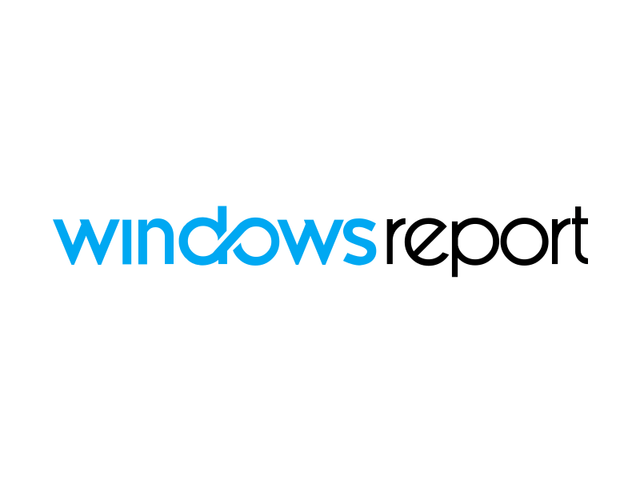Many people have experienced this issue, but the problem is not always easy to diagnose. In some cases, it could be a software issue or hardware problems. This article will outline how to fix this issue and prevent future issues from happening.
The windows 10 installation keeps restarting is a problem that has been present for a while. There are many fixes to fix the issue, but some of them don’t work.
Ivan Jenic’s contribution
Expert in Troubleshooting
Ivan has gone deep into knowing this operating system, with a specialty in drivers and driver problems, thanks to his passion for all things Windows and his natural curiosity. When he isn’t tackling, he is… Continue reading
11th of October, 2021
Originally published in May 2015
- Windows 10 restarting after installation is a difficult and risky procedure that may render your computer inoperable.
- Although a never-ending cycle of the computer rebooting may be annoying, you’ve reached the safe zone of seeking solutions.
- Antivirus, unwanted automatic updates, hardware issues, or a faulty installation of the operating system are all possible causes of this problem after installing Windows.
- We’ll take you through easy troubleshooting methods to rapidly stop the reboot pattern, regardless of the situation.

BY CLICKING ON THE DOWNLOAD FILE, YOU CAN INSTALL XINSTALL.
We suggest Restoro PC Repair Tool to repair a variety of PC issues: This program will fix common computer problems, protect you against file loss, viruses, and hardware failure, and optimize your PC to run at its best. In three simple actions, you can immediately fix PC problems and eliminate viruses:
- Download the Restoro PC Repair Tool, which includes patent-pending technologies (patent available here).
- To identify Windows faults that may be causing PC difficulties, click Start Scan.
- To address problems that are impacting your computer’s security and performance, click Repair All.
- This month, 0 readers have downloaded Restoro.
Although a never-ending cycle of the computer rebooting may be annoying, you’ve reached the safe zone of seeking solutions. Antivirus software, unwanted upgrades, hardware issues, or a botched installation of the operating system are all possible causes of this problem after installing Windows. Regardless of the situation, we’ll take you through basic troubleshooting methods to get you out of the reboot cycle as soon as possible.
Despite the fact that Windows 10 has a lot of great new features, it may also cause some issues.
We’ll teach you what to do if a new installation of Windows 10 causes your computer to reboot often in the list below.
What should I do if my computer restarts after I install Windows 10?
Here are a few more issues that people are having and how to fix them using our guide:
- Windows 10 keeps rebooting indefinitely – The computer may get trapped in an infinite reboot cycle at times. Take a look at some of our suggestions.
- Windows 10 reboot loop – This is usually caused by a faulty update, and the only way to solve it is to locate and uninstall that update.
- Windows 10 restarts at random — Hardware issues may cause this, so be sure to check your hardware.
- Install reboot loop in Windows 10 – This is a frequent issue that may be resolved by reinstalling Windows 10.
1. Make sure your antivirus is up to date
According to users, your antivirus software may occasionally create this issue, particularly if it isn’t completely compatible with Windows 10.
Many customers claimed that this issue was caused by Avast antivirus, but that after uninstalling it, the problem was fully fixed.
Keep in mind that you may not be able to access Windows 10 normally as a result of this issue, therefore you may need to uninstall Avast in Safe Mode.
Once you’ve entered Safe Mode, remove Avast or whichever antivirus you’re running and see if it fixes the issue.
Keep in mind that antivirus software may leave some files and registry entries behind, causing the issue to resurface.
It is advised that you use a specialized removal program to fully remove an antivirus. Most antivirus firms include specialized uninstallation programs for their software, so make sure you get one for yours.
Check to see whether the issue has been fixed once you’ve removed your antivirus entirely. If your antivirus was the source of the issue, you should try switching to a different antivirus program.
BullGuard is one of the most suitable and trustworthy antivirus solutions for Windows 10 that you should test.
Your PC is constantly watched even while it is connected to the internet, and any harmful behavior that may cause damage to your PC is blocked by the multi-layered security feature.
An intuitively easy interface enables you to quickly discover security issues that can be addressed right from the interface, such as applying Windows updates.
2. Stop your computer from restarting.
- Safe Mode is the first option when starting your computer.
- Search for sysdm.cpl in the results and open it from there.

- Click the Advanced tab, then the Startup and Recovery button, then the Settings button.

- Uncheck Select Automatically restart, then click OK to restart your computer.

To find possible problems, run a System Scan.

To detect Windows problems, click Start Scan.

To solve problems with Patented Technologies, click Repair All.
To identify faults causing security issues and slowdowns, do a PC Scan using Restoro Repair Tool. The repair procedure will replace damaged files with new Windows files and components once the scan is completed.
Note: While this is unlikely to fix your issue, it will give you with more information. You’ll almost certainly receive a BSoD the next time your machine restarts.
You may search our vast library of BSoD solutions using the message or error code that appears on the blue screen.
3. Make sure the Master Boot Record is correct.
- During the boot process, restart your computer multiple times until a menu of choices displays.
- Select Troubleshoot, then Advanced Options, then Command Prompt from the drop-down menu.

- Execute these commands:
/FixMbr bootrec
/FixBoot bootrec
/ScanOs bootrec
/RebuildBcd bootrec
4. Use the chkdsk command to check for errors.
- Start Command Prompt as described in the previous method after restarting your PC multiple times throughout the startup process.
- Run the command chkdsk /r X: (replace X with the letter that matches your system partition and keep in mind that letters might be changed if you start Command Prompt outside of Windows)

- Keep in mind that depending on the size of your disk, this procedure may take up to 20 minutes.
5. Revert to an earlier build
- Restart your PC a few times during the startup process until the choices list displays.
- Select Troubleshoot, then Advanced options, See additional recovery options, then Go back to the previous build from the drop-down menu.
- Enter your password after selecting your user account.
- Go back to the previous build by clicking the Go back to the previous build button and following the directions on the screen.
The issue should be fixed after your PC is returned to its prior build. If you can’t locate this setting, use System Restore to restore your system to a prior build.
If an update created the issue, you may wish to disable the installation of that update. Check read our post on how to stop Windows from installing automatic updates for more information.
6. Examine your hardware.
This issue may be caused by your hardware, in which case you should unplug all USB devices from your computer and see whether the problem persists.
Several people report that their Wi-Fi adapter was the source of the problem, so you may want to try removing it to resolve the issue.
Users have claimed that their CPU was the reason in a few cases, however before replacing any significant hardware component, be sure to thoroughly check your gear.
7. Examine your starting programs
- In Safe Mode, start Windows 10.
- Enter services.msc by using the Windows Key + R, then OK or Enter.

- To disable all Microsoft services, go to the Services tab and select Hide all Microsoft services.

- Select Open Task Manager from the Startup tab.

- Right-click the first item in the list and choose Disable from the menu. This procedure should be repeated for all starting apps.

- Close Task Manager and proceed to the System Configuration window, where you can save your changes by clicking Apply and OK.

- Restart your computer.
Note: If the issue persists, try enabling disabled startup apps and services one at a time or in groups until you identify the source of the problem.
Once you’ve identified the faulty program, you can either uninstall it or update it to see if it fixes the problem.
Explore our Windows 10 area for any information on the most popular operating system, such as news, tips, and how to solve different issues. Use our Tech Troubleshooting Hub to get solutions to all of your PC-related problems.
We hope that some of these methods were helpful in resolving your restarting issue; if you have any suggestions or comments, please leave them in the area below.
 Are you still experiencing problems? Use this tool to fix them:
Are you still experiencing problems? Use this tool to fix them:
- Download this TrustPilot.com-rated PC Repair Tool (download starts on this page).
- To identify Windows faults that may be causing PC difficulties, click Start Scan.
- To resolve problems with Patented Technologies, click Repair All (Exclusive Discount for our readers).
This month, 0 readers have downloaded Restoro.
Was this page of assistance to you?
Thank you very much!
There are insufficient details It’s difficult to comprehend Other Speak with a Professional
Start a discussion.
The computer keeps restarting on boot is a problem that has been present for a while. This article will discuss the causes of this issue, and how to fix it.
{“@context”:”https://schema.org”,”@type”:”FAQPage”,”mainEntity”:[{“@type”:”Question”,”name”:”Why does my computer keep restarting after installing Windows 10?”,”acceptedAnswer”:{“@type”:”Answer”,”text”:”
To fix this issue, try disabling the Windows Update service.”}},{“@type”:”Question”,”name”:”Why does my computer keep restarting before Windows?”,”acceptedAnswer”:{“@type”:”Answer”,”text”:”
This is a common issue that is usually caused by virus or malware. You can find out more about this and how to fix it at the following link:
https://www.howtogeek.com/223421/how-to-fix-a-windows-computer-that-keeps-restarting/”}},{“@type”:”Question”,”name”:”How do I fix a Windows that keeps restarting?”,”acceptedAnswer”:{“@type”:”Answer”,”text”:”
You can try to run a system restore or update your drivers.”}}]}
Frequently Asked Questions
Why does my computer keep restarting after installing Windows 10?
To fix this issue, try disabling the Windows Update service.
Why does my computer keep restarting before Windows?
This is a common issue that is usually caused by virus or malware. You can find out more about this and how to fix it at the following link: https://www.howtogeek.com/223421/how-to-fix-a-windows-computer-that-keeps-restarting/
How do I fix a Windows that keeps restarting?
You can try to run a system restore or update your drivers.
Related Tags
- my pc is restarting again and again windows 10
- computer keeps restarting before windows loads
- my pc is restarting again and again windows 7
- windows keeps restarting after update
- system_thread_exception_not_handled windows 10 keeps restarting

